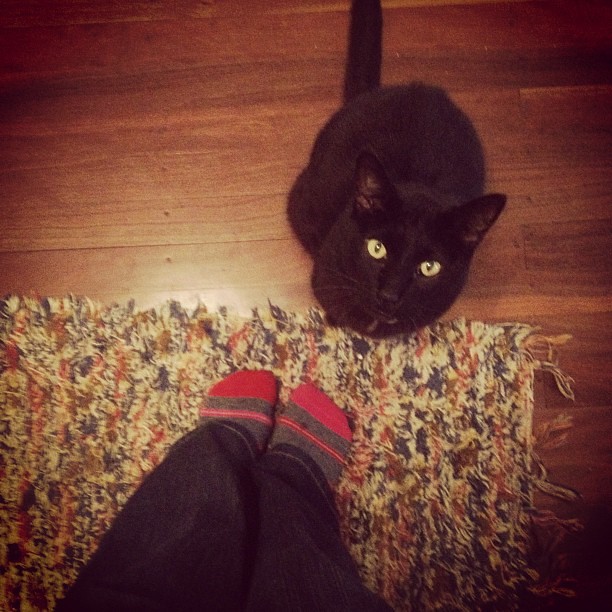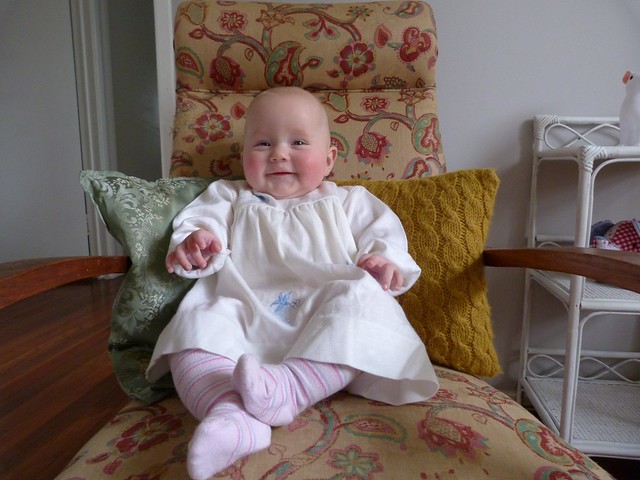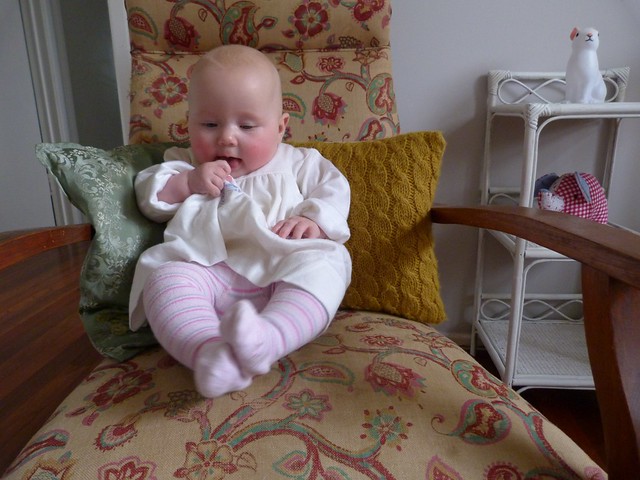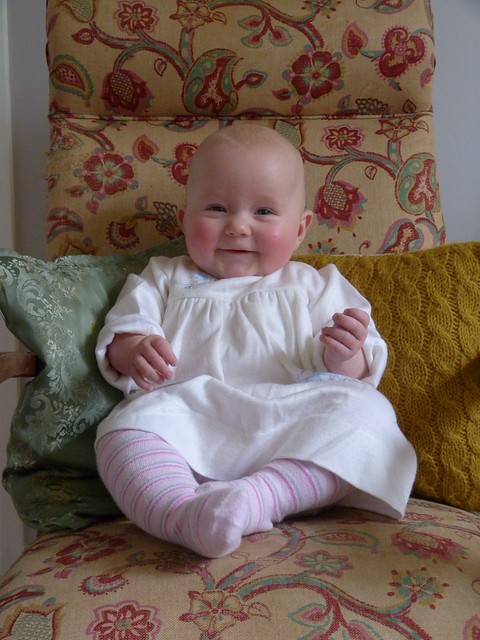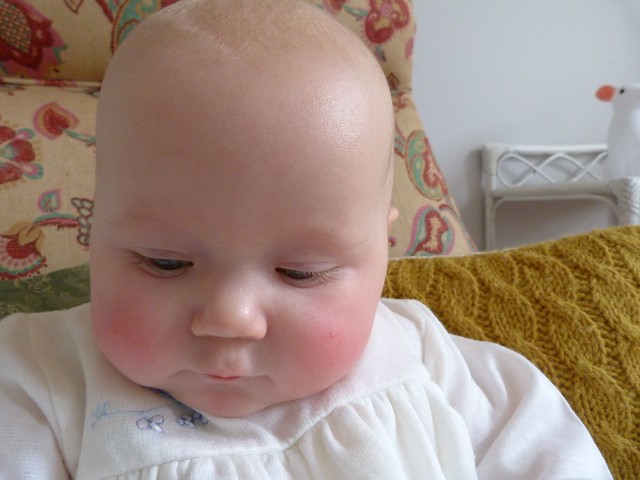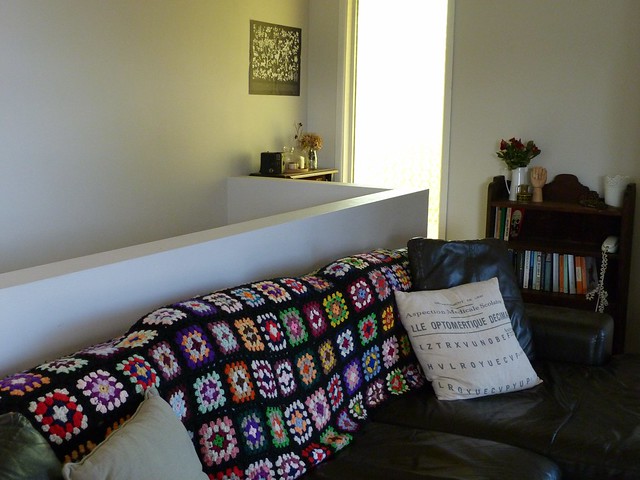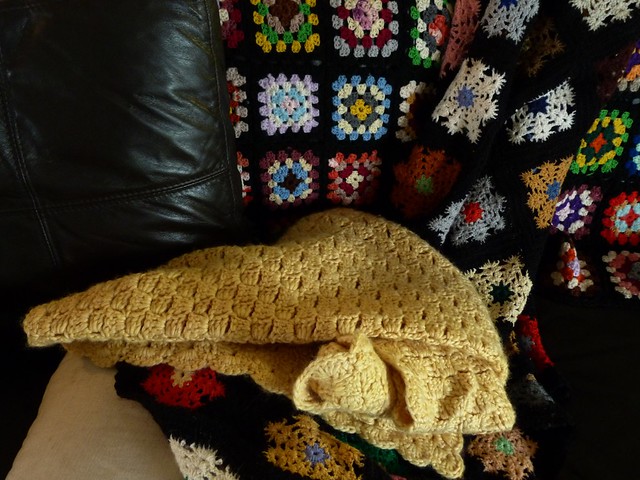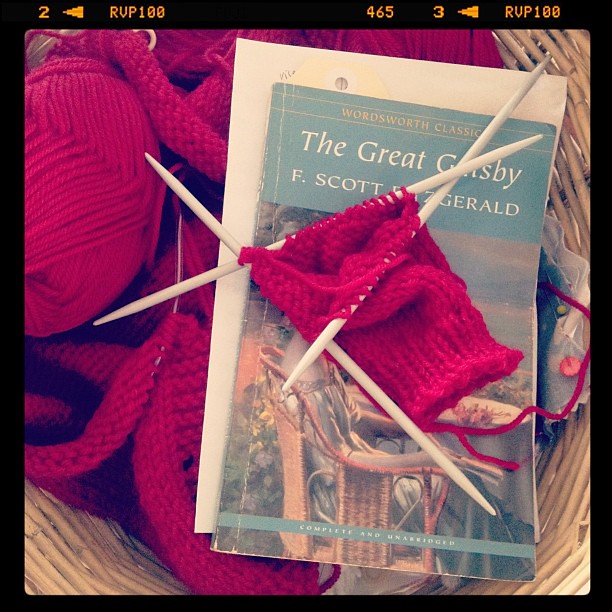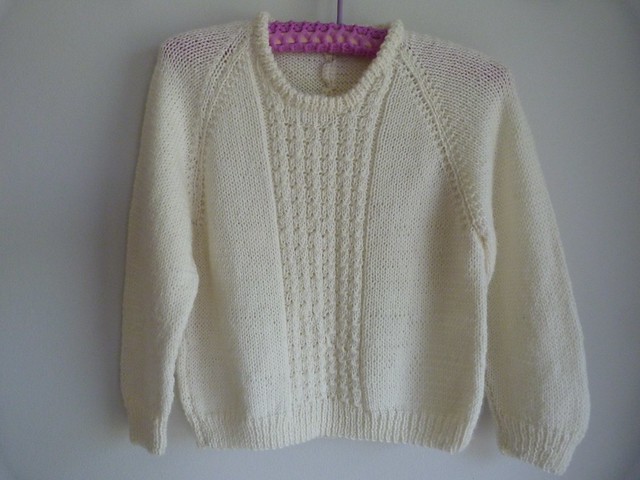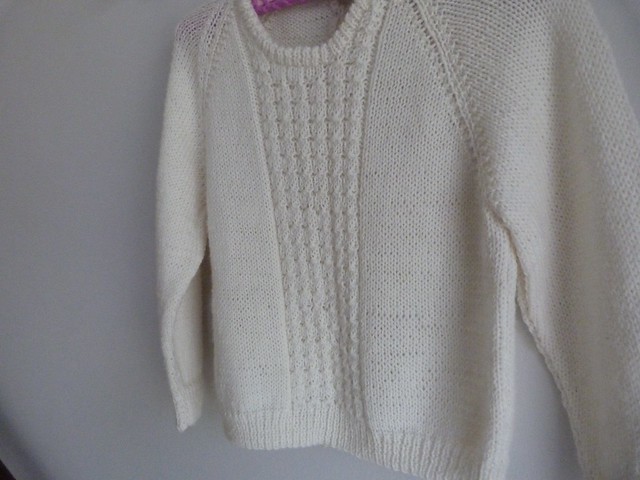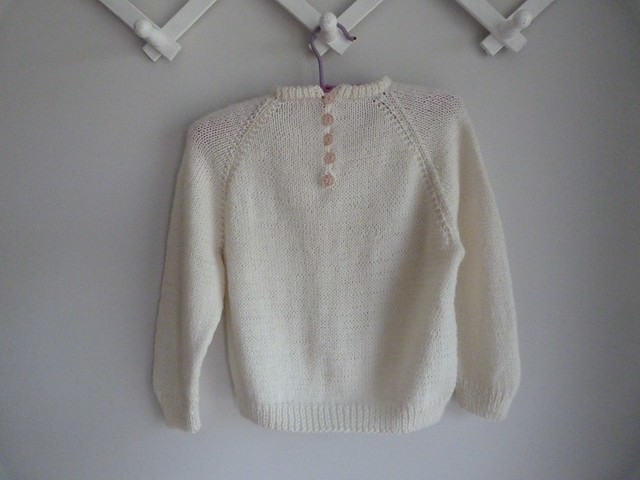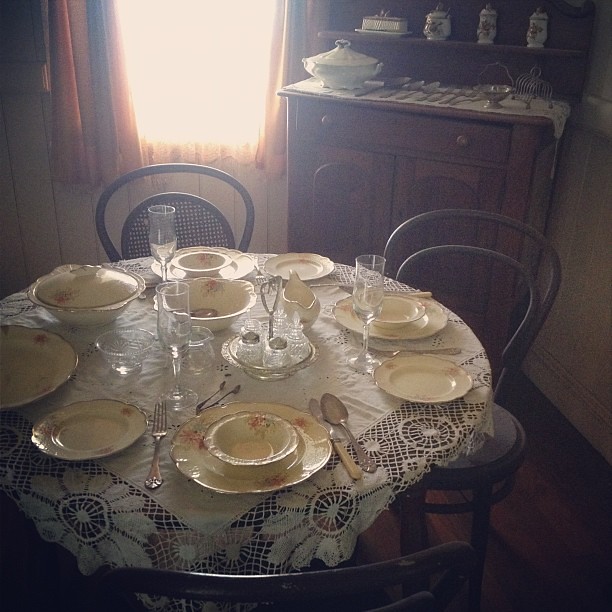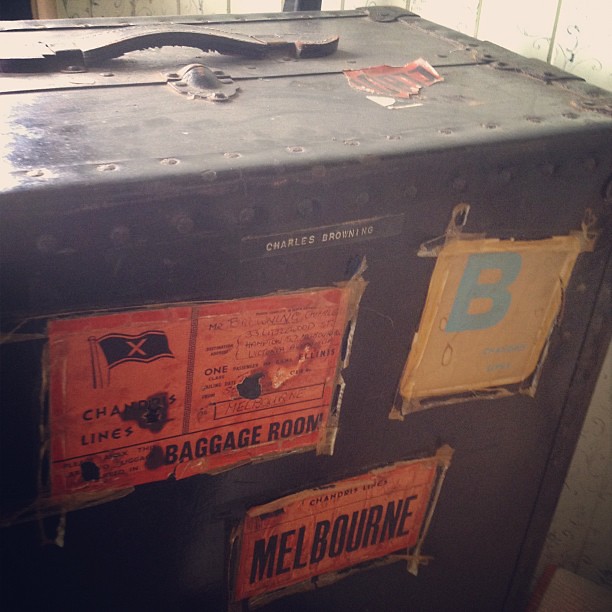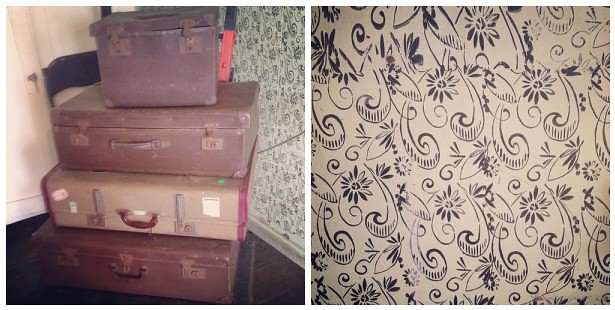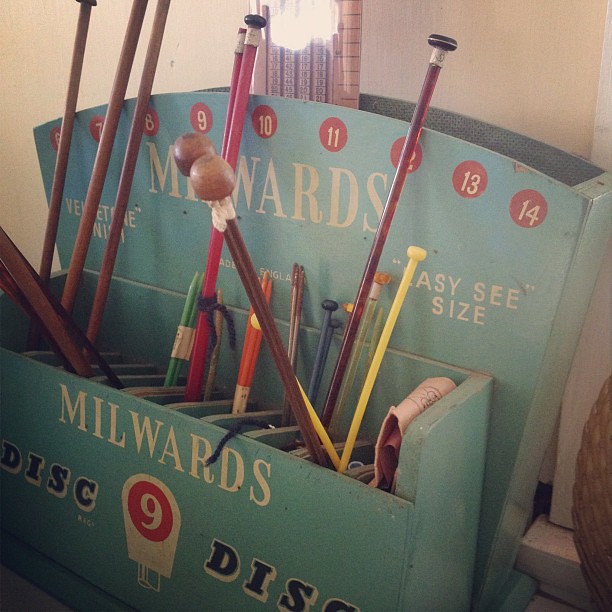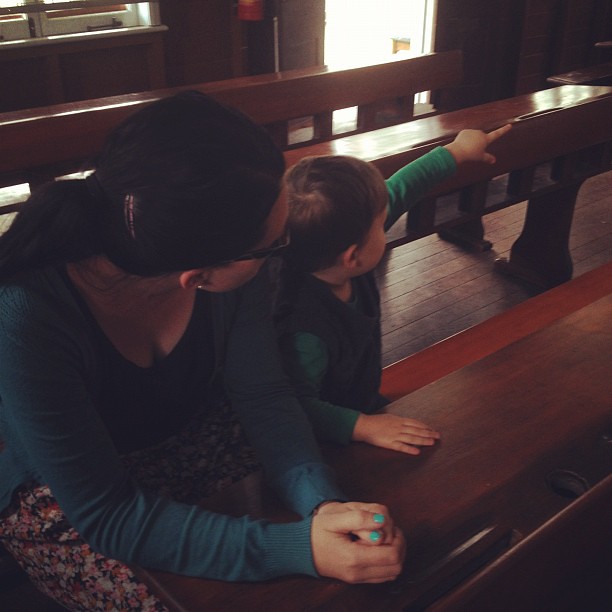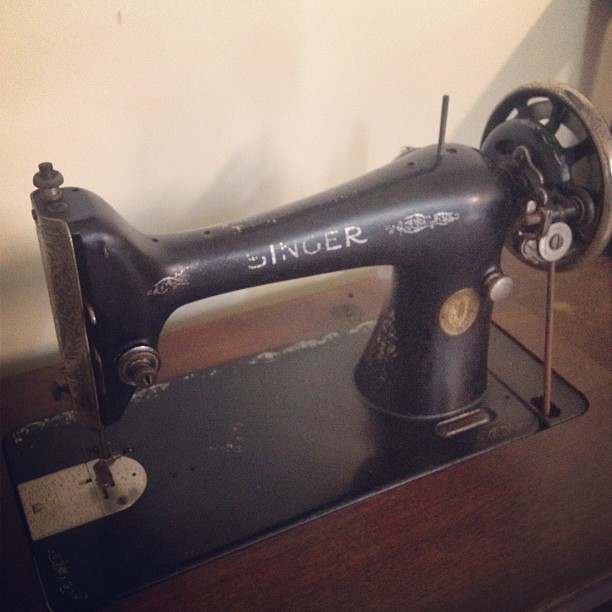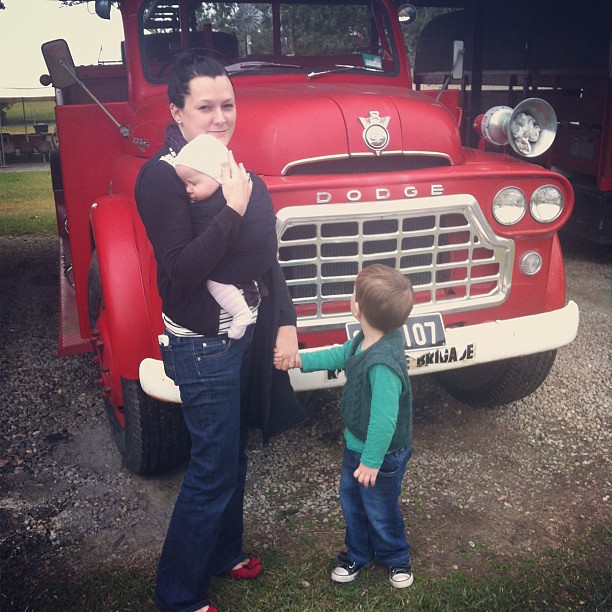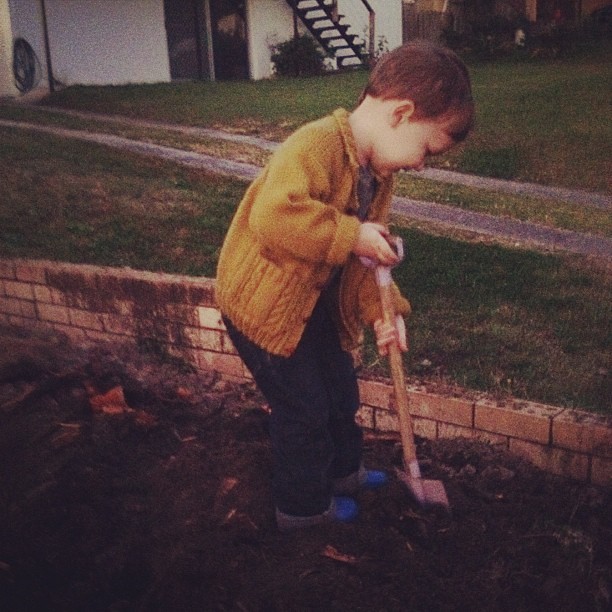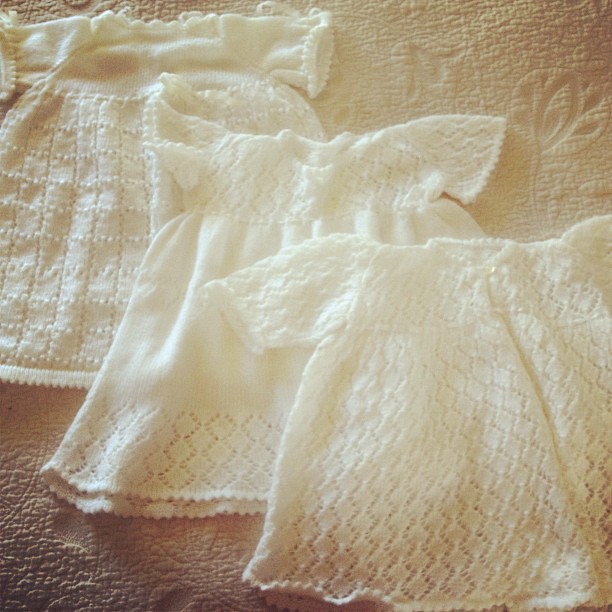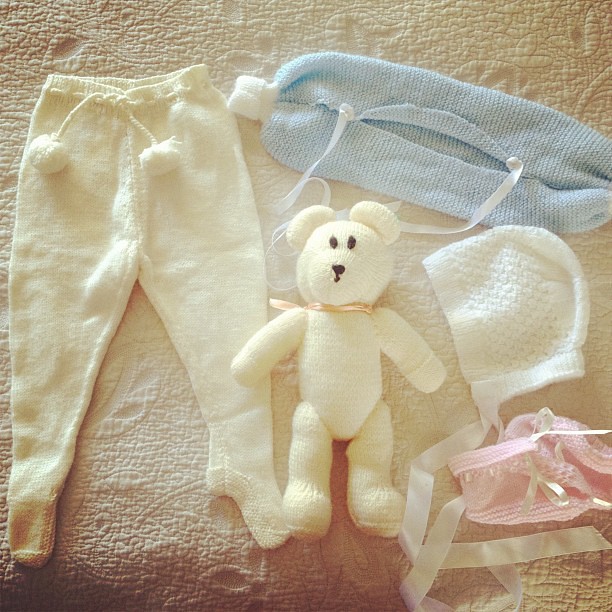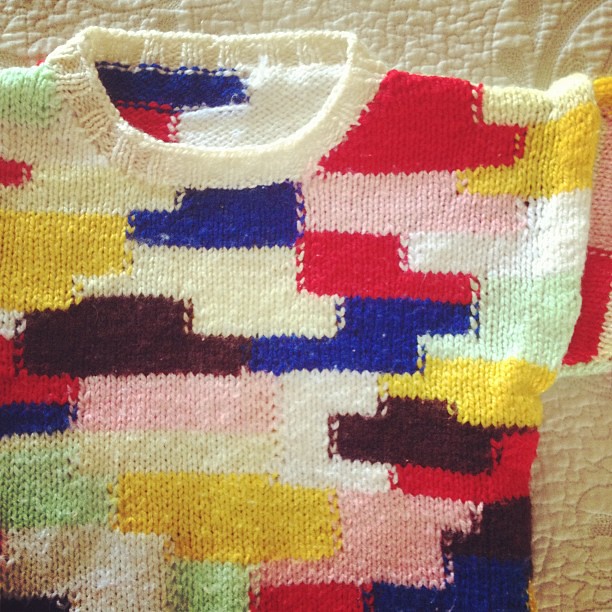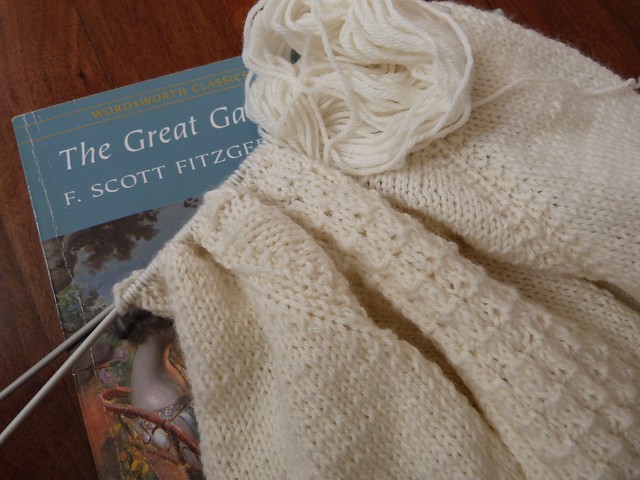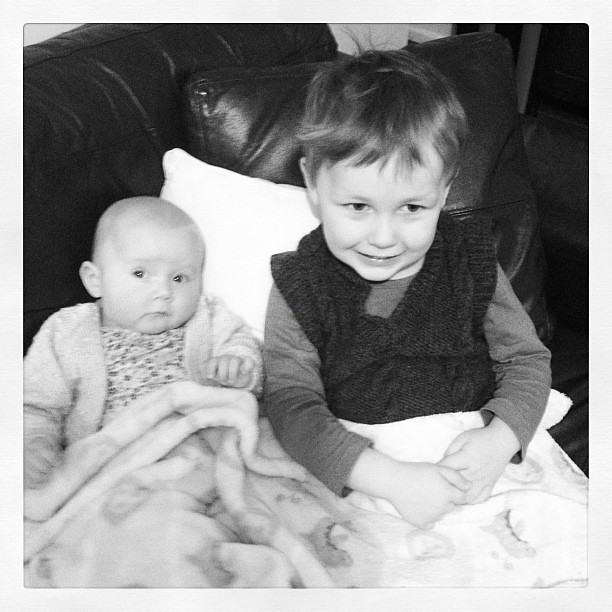The receptionist at our Medical Center* and I had a charming little chat this morning after she admired Emerson's
knitted tunic. She told me how she had dressed her babies in hand knits, either lovingly knit by her Mother, or sought out in op-shops. I happily confessed that Emerson's tunic was also thrifted, but that I knit for her too. She asked if I had knit my
scarf and seemed delighted that I had.
"I wish I could knit," she said.
"You can!" I replied.
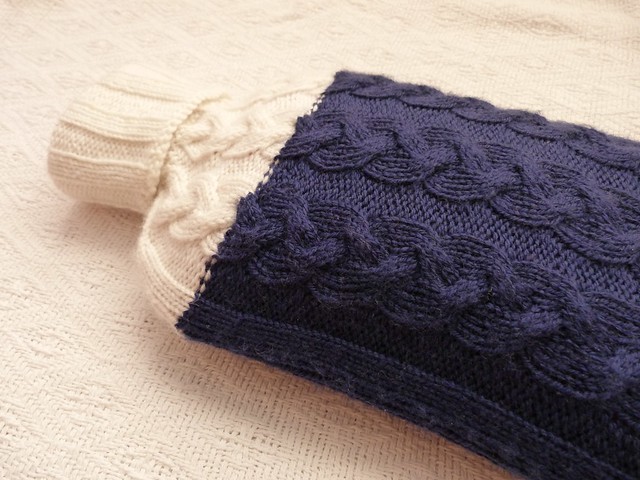
Hot water bottle cozy
Anyone can knit! Less than a year and a half ago I would often repeat that very same phrase. I would admire hand knits, stroke lovely skeins of wool, wish that I could knit and then admit to myself that it seemed too complicated. The receptionist felt the same way. She said she could do knit and purl stitches, "but not do fancy stitches like you." But even fancy stitches are just a combination of knitting and purling. Once you can knit and purl you can do just about anything. Even cables are just knit and purled stitches. The twist that gives them the cabled look is only a matter of skipping a couple of stitches, knitting the next couple of stitches, then knitting those stitches you skipped. The explanations are truly more complicated than the process its self. It's just a matter of sitting down with needles and yarn and having a go. You don't have to learn all at once. It's all about little steps and building your skills and confidence. I encouraged her to give it a try.
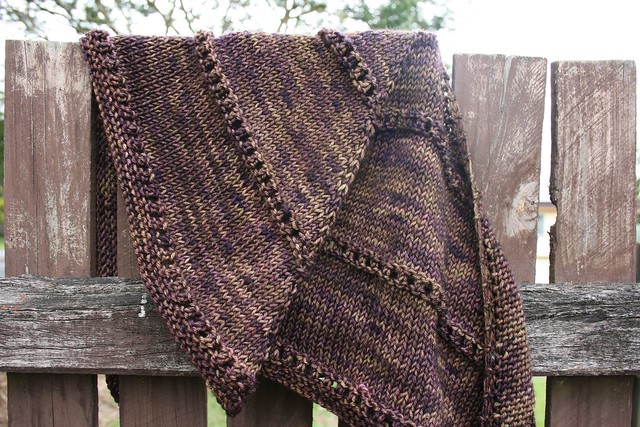
The Age of Brass and Steam Kerchief
If you know knitters in real life I can bet that they would be only too happy to teach you. Teaching someone to knit, helping them to learn a new skill, gives one immense satisfaction. And the satisfaction of knitting something for yourself can't be beaten. But even without first hand guidance, the internet is full of possibilities for learning how to knit. From video tutorials on
Youtube, to step by step
diagrams, you can learn everything you could ever want to know when it comes to knitting. Many yarn shops also offer knitting lessons and knitting groups meet up at cafe's monthly and welcome new knitters and are happy to teach beginners or or offer advice to those experiencing difficulties with patterns or stitches. You can find knitting groups through yarn stores or on
Ravelry. (Ravelry is a must for all knitters. It is a free website which contains thousands of patterns and where knitters and crocheters can keep track of their projects and yarn stash, join groups and forums etc.)
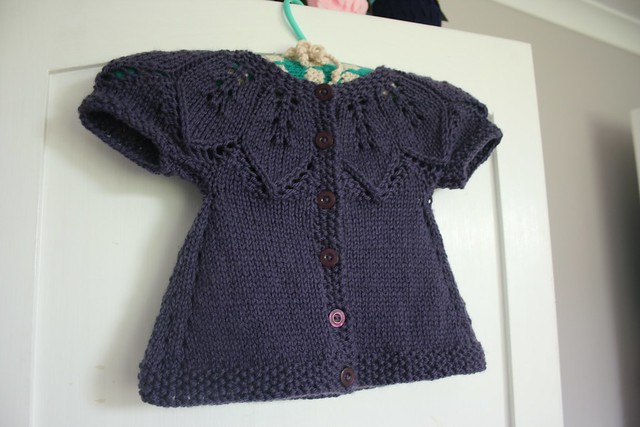
Autumn Leaves
Encouraged by a friend who knits, I finally picked up some needles and plucked up the courage and began knitting. I taught myself how to move beyond the knit and purl stitches I had learnt as a child. I chose simple patterns at first, like a plain vest, which allowed me to practice ribbing and decreasing. With each pattern I chose I was introduced to a new technique and I kept building on my skills. I kept challenging myself to try new things. Knitting abbreviations are daunting at first, but you do pick them up quickly. When I came across a new abbreviation that I didn't understand I would google a Youtube clip, as well as a description of the process, then I could watch it being done and write down the steps at the top of my knitting pattern as well to refer to each time I came to that part of the pattern. By the end of the project I would have learnt that new technique off by heart. And now, less than a year and a half later, I can no longer imagine not having a knitting project (or three) on the go.
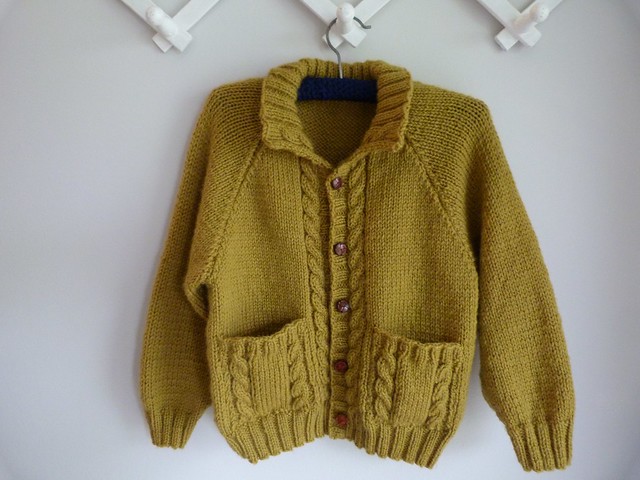
George
So if you have ever sighed and said "Oh, I wish that I could knit," I want you to pick up some knitting needles and yarn, allow yourself some quiet time and take the first steps. It doesn't have to be perfect. You can make wash cloths for practice. You can knit a simple scarf. Or try your hand at cables. You just have to allow yourself to try.
And if you are a knitter, I'd love to hear about how you came to knitting or who taught you to knit.
